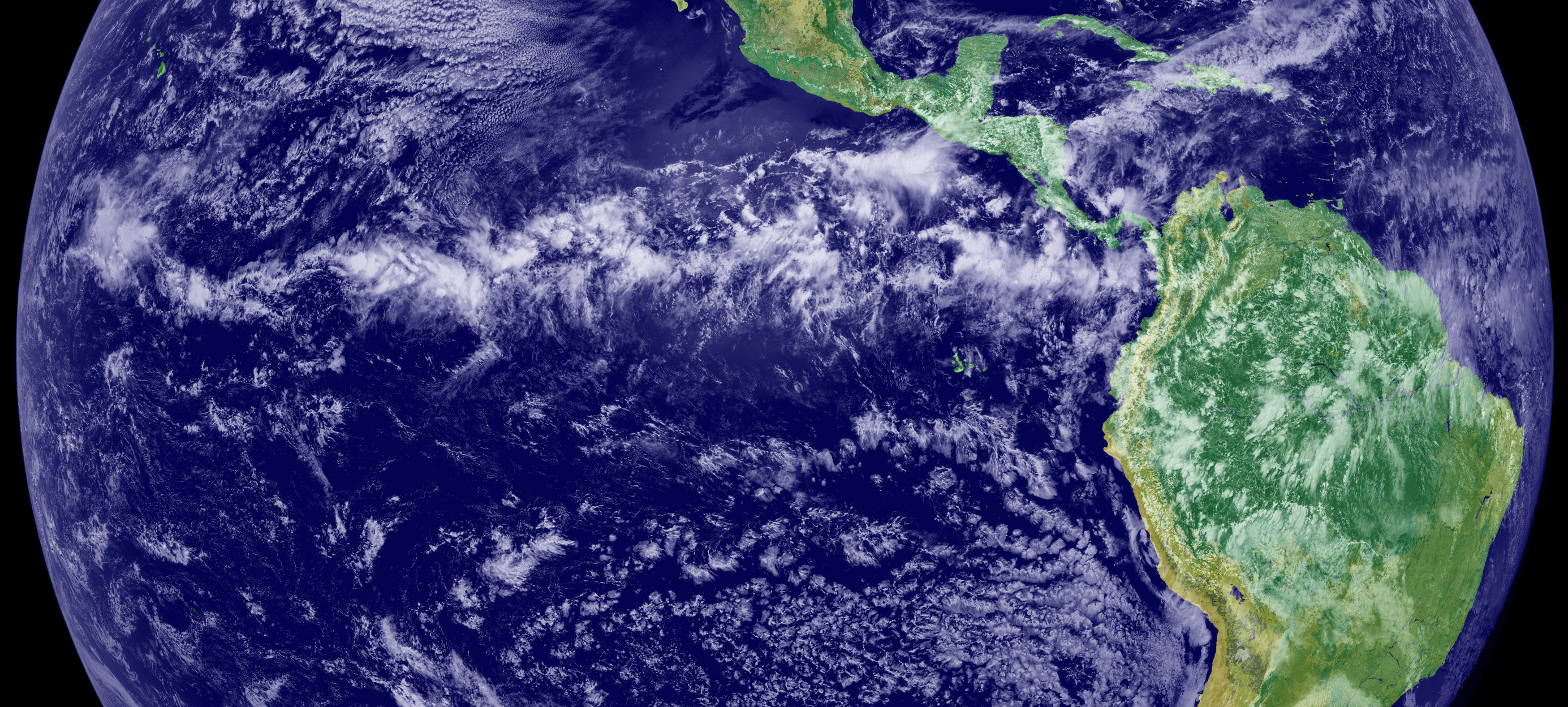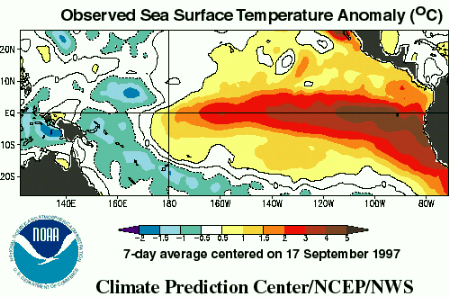Prepare for a long entry! And by the way, even though some I put links on the same names over and over, I may be putting new websites that might be of interest to the reader.
On the last post from this series I wrote about a little bit about tropical clouds, rain, and how they influence our culture and lifestyles (with one last picture below). Today I will talk on what moves around these clouds, and give a story on things I’ve learned about the tropics through the years that have made it an even more interesting place to me!
 |
| The ñapa picture of a sunset behind some activity. Picture courtesy of Gian A. Villamil (Physics/Meteorology UPRM) |
During the year 1995 we had a very active hurricane season. This was actually the first season I can recall almost completely (I was like 7 back then). Interestingly, this marked the beginning of as series of active seasons that’s still ongoing; largely attributed to the Atlantic MultidecadalOscillation (get used to oscillations, we like to name our phenomena the “Blah Blah” Oscillation, it’s that or the “Yata Yata” Mode or the “Some Guy’s” Wave).
So it was 1995. It was late August/early September. It was near my birthday, and we had this approaching system. It developed from what we call African Easterly Waves , whose signature can often be traced in those westward moving cloud clusters. That benign looking cluster developed into monster truck of a hurricane, named Luis. That hurricane (by then a large category 4 in the Saffir-Simpson wind scale) started lurking in our area, and the media starting buzzing about it. Being a puertorrican myself, and knowing how we are, I give my good word that I am not exaggerating when I quote:
“Every supermarket, grocery store and Walgreens was left barren.”
 |
| Hurricane Luis |
This was a big deal; it was the first hurricane since Hugo in 1989 slaughtered almost every leaf in El Yunque (it's even documented in a journal, pic below). Because of this it was understandable that people overreacted (although we overreact for every hurricane). I recall my dad putting metal and wooden bars in every window of our house, and considered taking down some of the trees in our backyard because of their potential danger to our house. In the end not much happened. Luis curved northward and we got spared.
 |
| Image from the USGS report on Hugo's damage on the El Yunque region |
Later that year we got threatened by more systems, including a scrape from Marilyn. The last one people talked about was Sebastien, which fizzled off without even getting close, so much for that one.
 |
| Hurricane Marilyn |
Tropical cyclones are a special thing. In terms of atmospheric things they are not very common, with roughly about 90 tropical storms, and a fraction of that becoming strong enough to be called hurricanes, typhoons, etc. You need several conditions for them to develop, and some more stuff for them to get big and strong. I like to think about most tropical phenomena as types of vehicles. In this sense, hurricanes are a sort of fancy car. Compared to other vehicles, they are more powerful, beautiful and expensive.
 |
| A fancy car. |
So, if hurricanes are fancy cars, then what are the other cars then? Well it so happens that the tropical atmosphere is full of waves and disturbances moving about. It can be to the east, or to the west, fast or slow. One particularly active place is the Intertropical Convergence Zone. This is one of the most energetic places on Earth, with giant clouds towering many kilometers up in the atmosphere. This area is responsible for a good fraction of the planet’s rainfall. You can easily recognize the ITCZ by looking at a map of the planet and seeing this thin belt clouds close to the Equator. In a way, the ITCZ is like the tropics’ highway.
There are also some bigger things that like to move around. There is the behemoth I’ve been mentioning a lot in my entries called the Madden-Julian Oscillation. This guy is like a carrier truck, a big truck that can carry many other vehicles in it. They are pretty slow but tend to enjoy ruling the road. They are also not as common as cars and motorcycles.
Of course, I did not know of most of these things when I was a kid. All I knew back then were tropical waves, hurricanes and clouds, and I thought that was pretty awesome. I learned of these, more complicated things in college, particularly grad school. Learning about these things has made me realize how dynamic the sky I used to watch as a kid actually is, and how complex it is. It is so complex that there are some phenomena that have been studied for decades by some of the world’s brightest people and there is still a lot to be understood about them.
But that’s not the end of it. There are even more things going on. Ever heard of the El Niño Southern Oscillation (remember when I mentioned that we like to call everything an oscillation, there you go!). This is a coupled ocea-atmosphere phenomena that has implications all over the world. A particular case happened in 1997, which people call it the El Niño of the century. It was extremely strong, and its effects made constant headlines on the news (look at the animation of all the super typhoons that year). It comes to show you just how something that happens in one place in the planet can affect everything. Like I said in a previous post, it really is just one Earth.
But why confine myself to where clouds form. Way up in the tropical stratosphere we have an interesting thing going on. It’s a shift in the winds that has the name of the Quasi-Biennial Oscillation (yet another oscillation!).
So there you have it, there are so many things going on it almost makes your brain explode. The place I was born in and the place I’m currently dedicating my career to: the tropical atmosphere. I’m not alone in this, because there are conferences just dedicated to this topic in which hundreds attend. What can I say, it’s a pretty awesome place with huge clouds and beautiful beaches. What else can a guy ask for?






No comments:
Post a Comment